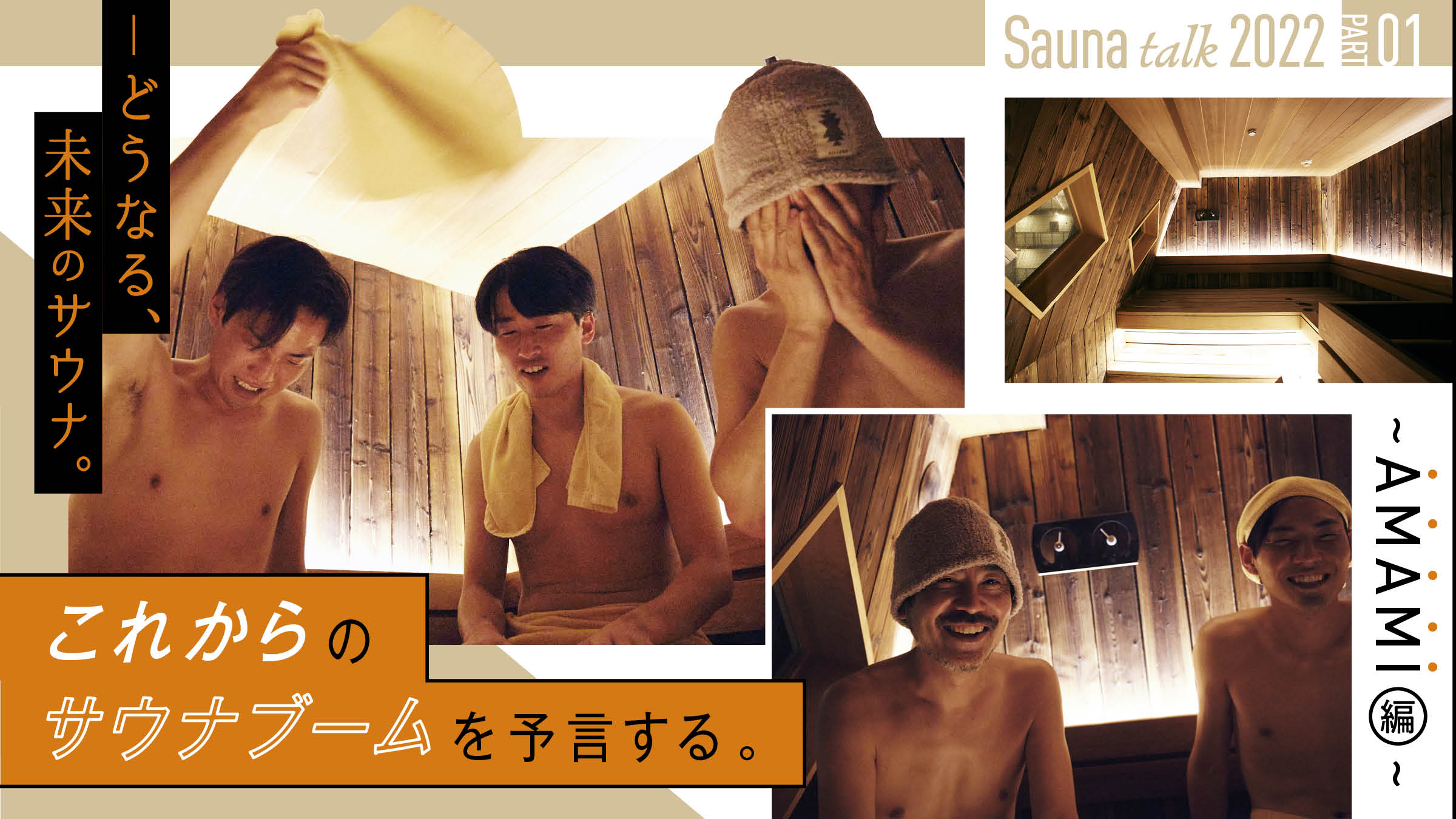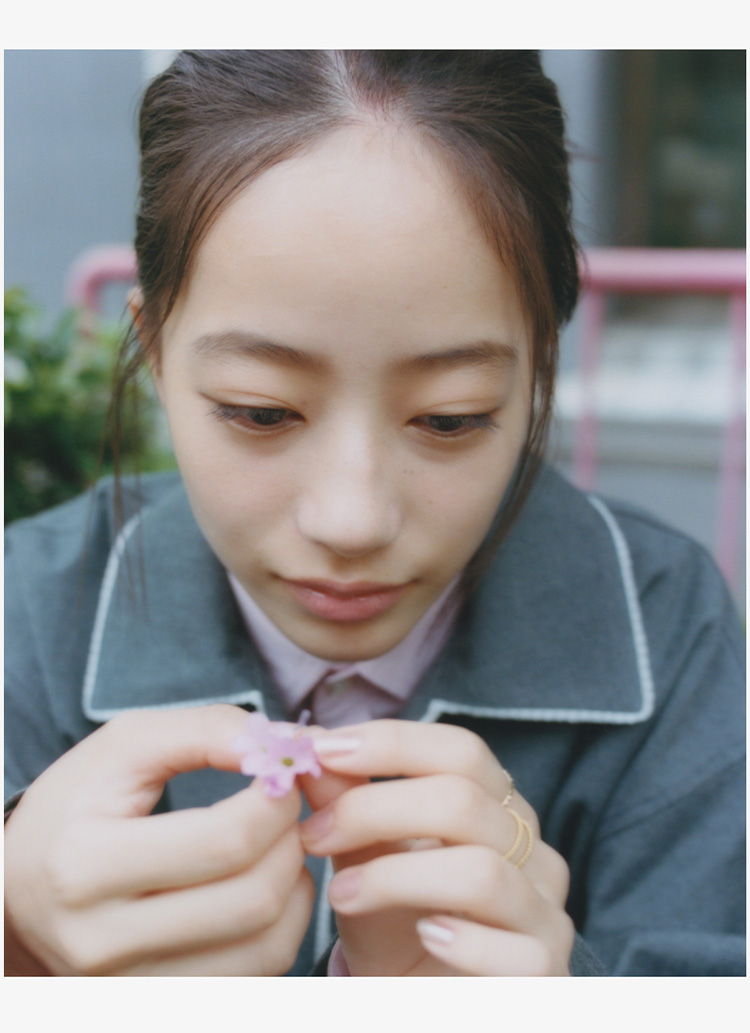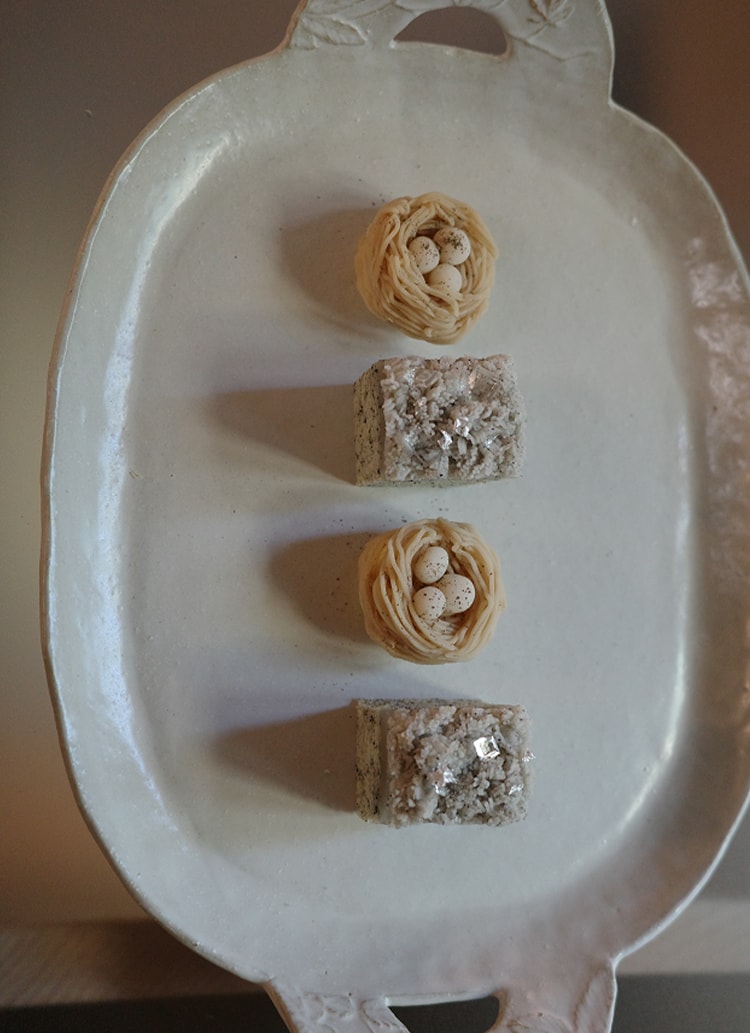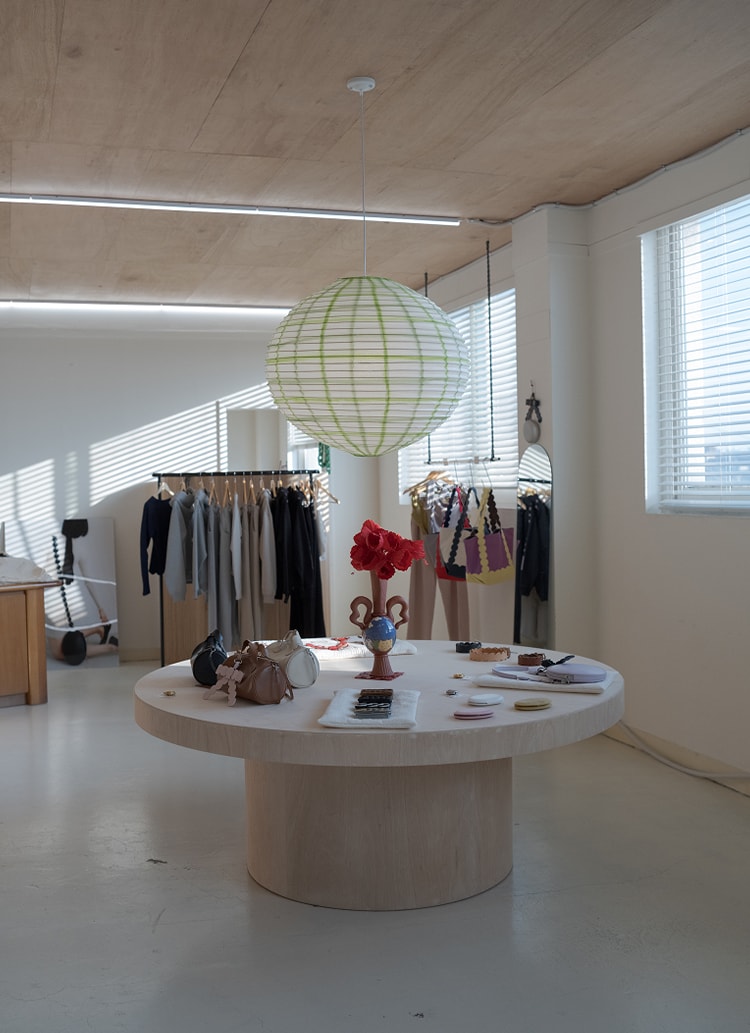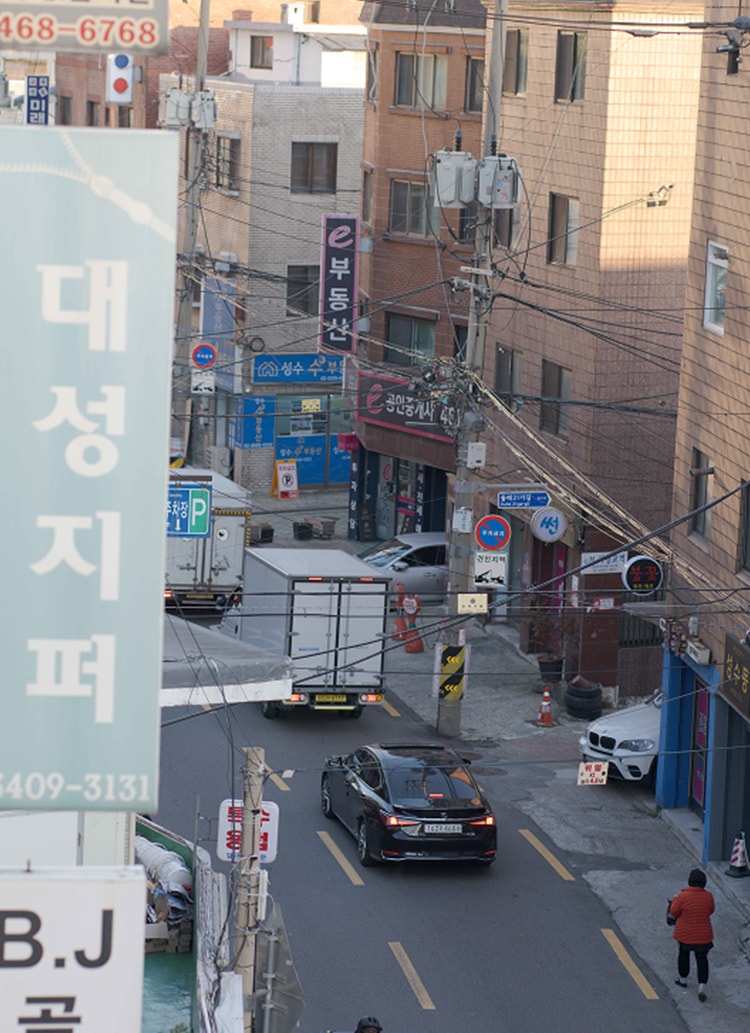PROFILE

Editor. He is well versed in old books and specializes in multifaceted creativity with literature at its core. In 2021, he formed "CULTURE SAUNA TEAM "AMAMI"", a team of cultural saunas to study sauna. Published "History of Sauna in Japan" (awarded the 1st Japan Sauna Society Encouragement Award and Cultural Grand Prize). In "BRUTUS" released on December 1, 2022, he supervised this magazine as "CHIEF SAUNA PRODUCER" for the first sauna special issue in its 42nd year of publication.
Twitter:@TP_kusanagi
Instagram:@yohei_kusanagi
PROFILE

He is the first member of AMAMI. Not satisfied with "TOTONOU (revitalize)" alone, he met Mr. Kusanagi in the process of learning about sauna culture and became a member. While working at a venture company, on his days off he travels around Japan in search of sauna facilities with a good old history. He loves saunas where he can feel the love of the facility owner.
PROFILE

A company employee who loves running and DJing. He does not take the train, but runs to sauna facilities. The distance he runs is usually 10 km, and sometimes as long as 30 km. He joined Kusanagi-san after meeting him by chance at ROOFTOP Sauna in Nishiogikubo.
PROFILE

Through an acquaintance, he became friends with Mr. Kusanagi and became a member. He has been involved in the web industry, including the launch of a start-up company, but is now independent and has built a rental villa with a sauna. On a round-the-world trip that also served as his honeymoon, he traveled to 16 countries, taking in saunas in every one of them. To his surprise, he found a sauna in Ethiopia.
Why Community?

Kusanagi-san, why did you create the AMAMI community?
Kusanagi:To begin with, when I published "A History of Japanese Saunas" last year, I felt my limitations. There is a limit to the amount of research one person can do. In fact, it would have been much more efficient if we had all researched and created the book together. Researching the history of sauna was more like an engineer's job. I had always shied away from community building, but sauna seemed like a different thing to me, and that was a big factor. I also wanted to have friends with whom I could talk about sauna as much as I wanted (laughs).
A.: We sometimes go to the sauna with a few people, but it is quite rare to have a large group like this and exchange information. How many members does AMAMI have now?

From left, Mr. Kusanagi, Mr. Tojo, Mr. HYPE, Mr. Toyama
Kusanagi:It's about 50 people. Kumamoto ".yurakkusuThe anime "The Sauna," in which Yoshitaka Nishio, president of the "Sauna" and the saunaodd cabThere are more than a dozen people who have participated in the event after I asked them to do so, including Mugi Kinoshita, director of the film "The Last Time I Saw You".
hỹp̃ẽ_ yes-potan (hereafter hỹp̃ẽ):We have a members' group slack, where we report to each other about where we have been, and Kusanagi's enthusiasm is outstandingly high. I feel bad that Kusanagi is the only one who reports, so inspired by that, we also try to report what we are doing.
Tojo:located in Kamata, Japan.Black hot spring Y~City KamataThe latest submission (at the time of the interview) was that the "deep" was crazy deep.
Toyama:In general, most sauna lovers are athletic types who go to saunas only to TOTONOU (revitalize). On the other hand, there are also cultural saunas where people like the history and culture of saunas, and AMAMI is probably the latter. AMAMI is a kind of club where people enjoy sauna in a geeky way.

Commemorative photo of CULTURE SAUNA TEAM "AMAMI" taken at the invitation of Akira Tajima, editor-in-chief of BRUTUS magazine at Magazine House. (Photo courtesy of CULTURE SAUNA TEAM "AMAMI")
Mr. Kusanagi's history of sauna outings.
I heard that you went abroad to visit a sauna a while ago.

Kusanagi:We visited five countries: the Netherlands, Germany, Norway, Finland, and Estonia. In Norway, where there is a sauna boom, there is a sauna in the sea right in front of the central station in Oslo, the capital city! The sauna stove manufacturer we interviewed in Estonia had gone public. You can go public with a sauna. ⁉︎ It was a series of culture shocks.
Kusanagi-san's style is to enjoy sauna together with history and culture, including geopolitics, isn't it? You did the same in your book "History of Saunas in Japan". Why do you do that?
Kusanagi:It's simply fun. What was interesting about interacting with many foreign saunas this time was that they are all serious about studying sauna. One of them, Mr. Elomar, the president of the International Sauna Association, even translated "History of Sauna in Japan" and has already read it! They all read a lot of books related to sauna, and they all have a high awareness of the need to protect the health of the community, and study from the perspective of preventive medicine. I felt that they were on a different level from sauna lovers in Japan.

Do you have any other impressive experiences in saunas in other countries?
Kusanagi:held in the Netherlands.Aufguss WM(I watched the "Aufguss World Championships" and the worldview and story of each contestant was humbling. I couldn't make sense of it anymore! For example, in the performance by a Lebanese heat wave artist from Germany, images of war were suddenly shown in the sauna room. After that, a voiceover narration was given.
In Lebanon, children used to love to fly kites (octopus). But after the arrival of Al Qaeda, they were never allowed to fly kites again. I want to revive that kite, a symbol of peace." After such a preamble, he started spinning a towel. Then the towel started to look more and more like a kite, and the next thing I knew, I was in the sauna room, sweating and sobbing.... I don't know why anymore.
The scoring criteria for this competition was based on the sauna masters' perspectives on their lives, and their own stories were very important. It was necessary to express how a person has lived his/her life and why he/she is doing Aufguss. I was overwhelmed by the world view, which was completely different from that of the Japanese Aufgusschule.
Reflections on SaKatsu.
Do you have any impressive sauna facilities that you have visited recently?

Toyama:I tend to visit older facilities more often than newer ones. Recently, I visited the Kisarazu-based "Sauna Kisarazu TsuboyaI went to the "I'm a big fan of the house". I was leaning back on the reclining sofa, and he told me that it could be folded down (laughs). It was very homey.
Kusanagi:That place has a classic nude calendar posted in the locker room. I wonder where they buy them in this day and age (laughs). Naoshima Island, Seto Inland SeaSANA MANEThe sauna at "SAZAE" was amazing. Designed by Kengo Kuma & Associates in collaboration with TTNE, a brand specializing in saunas, it is a private sauna for guests only. I am also acquainted with Taichi Kuma, who designed the sauna, and he is a hardcore sauna enthusiast.

SAZAE just opened in October 2022 at SANA MANE, a glamping-type resort facility on Naoshima. The scenery is fantastic at night. (Photo courtesy of CULTURE SAUNA TEAM "AMAMI")
hỹp̃ẽ:A DIY hut sauna built by a person who opened a café in Oita.Tuuli TuuliThe sauna was a wood stove type sauna, DIY but authentic, the river instead of a water bath was nice, and the personality of the owner was wonderful.
I see that you all travel to saunas far from here. In the city center, there are more and more facilities where you can queue up in front of the sauna room.
hỹp̃ẽ:I target facilities that are far from the station or have poor access to transportation. If you go running to those places, you will often find that they are empty. At Odaei Station in Kawasaki, there is a "highly ranked bathhouseI went to the sauna room at 8:00 p.m. on Saturday, and I was the only one in the sauna room. It was very comfortable.
Tojo:I think that places with a lot of "Sauna Kitai" reviews and sacred facilities are crowded. In Tokyo, I feel that saunas with reservations that allow multiple people to enter are more satisfactory nowadays. There are two saunas in Ebisu and Azabu.THE CLASS.is the highest end of the three, with an annual fee of 1,100,000 yen, but I recommend it as an experience because for the first trial, four people can go for 5,000 yen each. The sa room is made of natural lava stones and original sauna stones, and the water bath is filtered with mineral ore water. They are very particular about the temperature, not only making it hot, but also keeping the temperature at 65℃, humidity at 55%, and the water bath at 15℃, which they say is the most comfortable and good for the body. I feel that this is a sauna that has evolved uniquely in Tokyo.
Toyama:I have recently been escaping to the outdoors to avoid the lines (laughs). I enjoy tent saunas near rivers, lakes, or the ocean. Since I have more opportunities to be in contact with nature, I want to do things like self-sufficiency, so I enjoy eating insects, fishing, and learning about wild plants.

Do you have any particular style of sauna + activity that you are focusing on?
hỹp̃ẽ:What I have been paying attention to, or rather practicing, is sauna + run. I am also a DJ, and I became a night owl due to a series of onsite jobs, which caused me to gain a lot of weight for a while. I tried to lose weight by taking a sauna and running, but as I did so, I couldn't maintain the motivation to run. So, I decided to run in order to go to the sauna, so I started going to a public bath 10 km one way on my way home from work, taking a sauna, and then going home. On weekends, I sometimes run 20 or 30 km and go to the sauna.
Do saunas help with running fatigue?
hỹp̃ẽ:I feel tired and refreshed. I also feel more comfortable in the sauna if I load up on the run. The other day I went to the sauna by train for the first time in a while, but I didn't feel very fit (laughs).
Tojo:Yes, it is true that the more tired you are, the TOTONOU (reveitalize) you will be.
Sauna is a place that connects people to each other.
How do you think sauna trends will change in the future?
Kusanagi:What I think is coming is whisking.
hỹp̃ẽ:It's good. Whisking is the Osaka "Naniwa Kenko Land YutopiaI experienced this in
Kusanagi:How did it go?
hỹp̃ẽ:The scent of birch was rich and soothing. There seems to be only one person there who can do whisking, though, and he won't do it unless the timing is right.
Tojo:Mr. Kusanagi, you also experienced whisking in Germany, right?

Kusanagi:Yes, yes. The German whisking was like a Yoshimoto Shinkyoku. They came into the sauna room late, beat them up with a Vihita, and made them hot with a wax, and then everyone laughed at them, saying "Hot! Everyone laughed and said, "Wah-ha-ha!" Whisking in Germany was completely entertaining. In the future, I predict that facilities specializing in Aufguss and whisking will accelerate in Japan as well.
I didn't know there was such a world. What is the impression of Japanese sauna culture from overseas?
Kusanagi:I think Japan is unique. I actually hear from saunas overseas that they want Japan to develop its own unique culture in Japan.
Tojo:I have recently visited various saunas overseas, and I have never seen a culture that is so particular about water and air baths as in Japan. I don't think there is any other country that is so conscious of the balance between sauna, water bath, and air bath, and so particular about "TOTONOU (revitalize)".
I see that Japan's sauna culture has also become Galapagosized.
Kusanagi:After Corona, many private saunas were built, but they are only in Japan. I'm not really attracted to them, but there is a sauna in Obihiro calledRoman FountainThere's an old establishment like the original private sauna called "The Sauna". That kind of place, or the one I came to today called "Marcin SpaI would go to a "private sauna".

The original private sauna "Fountain of Rome" established in 1976; the price per room is a very reasonable 2,200 yen for 60 minutes. (Photo courtesy of CULTURE SAUNA TEAM "AMAMI")
Why is that?
Kusanagi:The reason you want to go into a private room is that you want to be alone because of the noise around you. To put it in an extreme way, you are irritated by other people. As an extension of "don't talk on the train," there is "don't talk in the sauna." Japanese people interfere with others excessively and are very noisy.
On the other hand, saunas overseas are social places, and Europeans are very friendly to everyone. In Europe, it is normal to connect in the sauna, and it is fun to talk about this and that with everyone in the sauna. I prefer saunas in other countries. So I can enjoy any sauna where I can talk with my friends.
I see. I hope Mr. Kusanagi will do a sauna to replace it.
Kusanagi:I don't run a sauna. But I do not run a public sauna in Finland, "Sompa SaunaI'm interested in "The Sauna". It is a sauna run by donations and volunteers and is completely free. There are no showers or changing rooms, and we have to heat the stove ourselves, but many people volunteer to work there, and it has become a local communication spot. When I talk to saunas around the world, they all love "sompa saunas. I also understood the excitement of the sauna only after I went there. So I am planning to create something similar in Japan, and I think it will be interesting. Isn't it wonderful that saunas can create communication?


